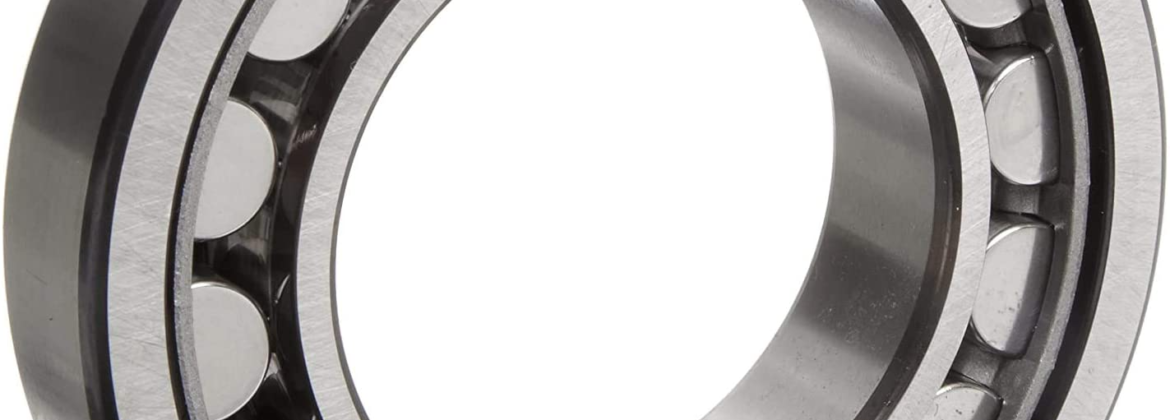The amount of friction in a bearing depends on several factors, including the size of the bearing, its speed and lubrication. In general, larger bearings have more friction than smaller bearings, as do bearings that operate at higher speeds. Friction increases with load and decreases with temperature.
Typically, the coefficient of friction between two surfaces is less than 1.0. It is important to note that the coefficient of friction can vary greatly depending on the materials involved; rubber has a coefficient of friction of 0.80 while steel has one of 0.30.
The percentage of lost energy due to friction for different types of bearings ranges from 5 percent for plain bearings to 50 percent for ball or roller bearings when operating under load at high speeds and temperatures up to 250°C (482°F).
The amount of friction in the bearing depends on the bearing type.
Ball Bearings – These are typically used for high-speed applications, but they tend to have more friction than other bearing types.
Sealed Bearings – Sealed bearings are designed for low-friction applications. They’re typically used in electric motors and other equipment that requires precision.
Tapered Roller Bearings – Tapered roller bearings have a roller mounted on each side of a shaft or spindle with a cage surrounding them. These bearings have low friction and high rigidity, which makes them popular in situations where precision is important like machine tool spindles or milling machines.
The amount of friction in the bearing depends on the bearing load.
Friction is a force that resists relative motion between two surfaces. The coefficient of friction, μ, is a dimensionless quantity that provides a measure of the force required to move an object across a surface.
The amount of friction in the bearing depends on the bearing load. For instance, high loads cause higher friction but also cause more wear in the bearing because of higher temperatures. Therefore, you should use ball bearings with high-load capacity when there are high loads acting on the bearing.
The most common cause of failure in a ball or roller bearing is too much load combined with low lubrication and inadequate lubricant cleanliness.
The amount of friction in bearings depends on speed and lubrication.
Friction is a force that resists motion between two surfaces in contact. Friction is a force that resists motion between two surfaces in contact. One way to understand friction is to imagine pushing a heavy box across a floor. The box may be too heavy for you to move on your own, but if you push it with enough force, it will slide across the floor. Friction is what makes this possible.
The amount of friction in bearings depends on speed and lubrication. As speed increases, so does the coefficient of friction between the rolling elements and raceways (or balls and raceways). Therefore, as speeds increase, more load gets transferred from the rotating member to the stationary member of the bearing system. This causes more heat generation and wear in the bearings.
To reduce friction, lubrication is used in bearings with internal clearance spaces or joint surfaces that are separated by only a thin film of oil or grease between them (such as ball bearings). Lubrication also reduces wear and noise due to abrasion during operation.
The amount of friction in the bearing increases with the surface area.
Friction is a force that resists the motion of one object with respect to another. Friction arises between two objects that are in contact. The friction force is the torque (rotational) force that is required to bring the objects through their initial contact and to maintain them in contact.
The amount of friction in a bearing increases with the surface area in contact and decreases with the force pressing the parts together. If a large force presses two surfaces together and only a small amount of movement takes place, there will be less friction than if a small force presses two surfaces together but they move more easily. When you apply more pressure on an object, it slides easier because there’s less friction between it and whatever you’re trying to slide it across.
The friction created by the bearing is called rolling resistance or sliding resistance.
Friction is a force that resists the motion of objects. Friction causes objects to rub together, usually due to their contact surfaces sliding against each other. This rubbing together of surfaces is called friction.
The friction created by the bearing is called rolling resistance or sliding resistance. This is what makes it possible for an object to move smoothly over a surface without slipping or skidding. The amount of friction depends on many factors, including the type of surface and how fast one surface is moving relative to another.
Bearings can only reduce friction as much as possible.
Bearings can only reduce friction as much as possible. Friction is always present in a bearing, no matter how good the quality of the bearing or how well it has been lubricated.
The main reason for this is that the sides of rolling elements are not perfectly smooth. The edges and corners of these surfaces rub against each other, causing friction.
In addition, small amounts of dirt, oil and grease are deposited on the surfaces of rolling elements and cage walls. These deposits also rub against each other, causing friction.
This type of friction can be reduced by using better-quality bearings or by using special lubricants that form an extra protective layer between the rolling elements and cage walls.
The amount of friction in a bearing varies with the type of bearing. The rolling element contact is generally less than 10%, but in large bearings, like a ship’s rudder, it is as much as 20%. The load on the bearing will also change the amount of friction. This makes changing gears or heavy machinery easier on bearings that are lubricated with oil or grease.

